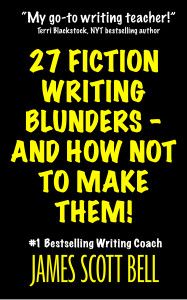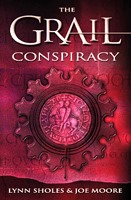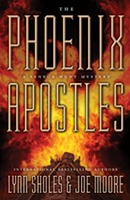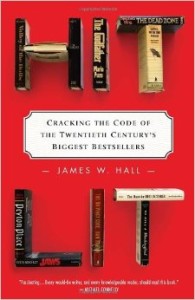Put ten writers in a room, ask them about their creative process, and you’ll likely get ten different answers varying by approach and degree, and volume. The gamut includes planners, plotters, pantsers, hybrids, muse-followers and in some cases the prayerful, at least when you can get them to admit this as a last resort.
All of these methodologies work (okay, the last one is iffy), though with a diverse range of efficiency and the measure of Xanax consumed.
Some contend they are writing drafts.
And that this – their way – is the only way, it is what writing is at its core and at its best.
Others, while disagreeing, admit they are planning drafts, which is something other than – preliminary to – actually writing a draft.
A debate often ensues.
It is clarifying, as well as stupendously good news, to realize that all of us, in the early stages of story development, and no matter which process we sign up for, are doing exactly the same thing, at least when expressed as an objective. We are searching for our story, culling it from an original notion, trying out ideas, vetting others, seeing what fits, what works, and hopefully tossing what doesn’t.
Different approaches heading toward an identical destination, at least when – either way – it works. Too often – also either way – it doesn’t.
Storytelling is not an exact science.
There is no math here. Opinion, imprecision, world view, comfort-level and a default do-whatever-Stephen-King-does ethos become the raw grist of the author’s choice.
The reason this is worth noting is that the criteria for – and the moment of – our rounding the corner toward actually writing the story, versus searching for it, is a milestone portending massive consequences.
Because if we haven’t actually completed the search for story – indeed, if we don’t possess the tools and story sensibilities to know when we’ve truly found the best possible story and its beats – then the search draft at hand cannot possibly be just that: the best possible story that awaits us down the storytelling road, the one where everything works.
Same goes for a story plan. Story sensibility, rather than process, is the hallmark of creating a killer story.
The search for story is essentially a search for answers…
… good answers, compelling answers, answers that trump more obvious answers, that when viewed in sum actually become the core elements and essences of the story itself.
But answers to what, specifically?
Answers to questions that define what it is we must discover, what we must know about our story before it can work. Answers that become the raw grist of effective exposition.
This is often – usually – where experience counts, and mightily.
Rare is the newer author who nails these questions with consistency, regardless of their creative process.
Indeed, it is a dearth of compelling answers that explains the percentage of rejection that defines our avocation. It is why so many breakout first novelists have a drawer full of incomplete and rejected manuscripts that are rarely spoken about. It is evidence that the rumored degree of difficulty has not been elevated casually.
Story planners and plotters seek to find these answers before they write a draft, using them as components of the draft, and thus – in theory – reducing the number of drafts required to reach the Valhalla of “Final” in its highest form.
Pantsers, and to a lesser degree hybrid planners who quietly do a little planning on the sly, use the drafting process as the primary means of story search, which quickly separates that particular sub-demographic into three categories:
– pantsers who, within a draft somewhere down the line, finally do find the best possible answers, thus enabling their next draft to become a contextually solid story that embraces foreshadowing, context and nuance;
– or, pantsers who either believe they’ve found those answers, but have actually lowered the bar because, after all, writing draft after draft can be exhausting and life is short;
– or, pantsers who really do hit on that best possible story in the middle of a draft, which then (tragically) turns out to be the draft they submit, half of which is randomly context-free and the last half context-driven, rather than writing one more (at a minimum) fully-informed draft that has the more likely shot.
The latter is like a college student who, after three years of study, still doesn’t know what their major will be, but during one random night in their senior year bolts upright with an Epiphany that envisions their future, prompting him/her to change their major the very next day.
We all know how that turns out. Usually it means one or more extra, unexpected and unplanned for years of school, because worthy majors have prerequisites that begin back at Square One of one’s Freshman year (pre-med students and science majors: remember Chemistry 101?).
A good novel, regardless of how it got good, depends on context, foreshadowing, nuance and optimal pacing to work, all of it beginning at Page 1, and all of which are impossible if you don’t truly understand – and nail – these questions and their answers, including how the story ends.
I can’t squeeze all 54 of those questions into the space parameters of The Kill Zone.
But I will offer the more foundational questions among them, which experienced pros will recognize immediately, and newer writers and some MFA grads, especially those who are “all about character and theme,” might find daunting.
Here they are:
What is the core DRAMATIC story spine the emerges from your premise, and the DRAMATIC QUESTION it poses?
The key word (fragment) here is drama, not character.
In other words, what is your hero’s primary story problem or opportunity – a.k.a. the plot – expressed as a hero’s quest or journey, motivated by stakes and opposed by an antagonist?
Without a good answer to this one and you haven’t finished your story search. Try to write this manuscript without that answer and you are virtually assured a rejection and a rewrite.
What is CONCEPTUAL about your premise?
Newsflash: concept and premise are different things. Most new writers don’t know or understand this, and a high percentage of practicing writers and their agents are confused by it. But it’s true. A premise infused with the notion of something conceptual makes a story more intriguing, beginning with the pitch itself.
Does your thriller unfold within the walls of the CIA, or the Herman Miller partitions of an accounting office in Sacramento? Is the hero playing for world peace and survival, or the keys to a stolen Buick? Is the femme fatale seeking to steal nuclear detonation codes, or palming a few lottery tickets when her shift at the 7-11 concludes?
What blocks your hero’s path, and what is the agenda of the antagonist?
In thrillers and mysteries, the worst possible answer sounds like this: “The hero never felt approval from his/her father, and has always felt low self confidence and self-esteem.”
Heroes who are their own primary villains rarely work, especially in mysteries and thriller.
That’s about as dramatic as someone crying as they watch The Bachelor. The degree of external drama – conflict leading to tension – defines thrillers and mysteries, and is necessary to some degree in each and every other genre, as well.
How do you set up your hero’s quest, prior to launching it?
This implies you know what a setup is, and how and where the hero’s quest hits the page for the first time in a fully-informed way (hint: it’s called the First Plot Point, and it happens 50 to 90 pages in, after the setup).
Blow this one and a narrative domino effect of Voldemortesque consequences will follow.
What is your First Plot Point, and how does it change/interrupt the hero’s life and thrust them down a sudden, new and urgent path?
It may or may not be big (thought it often is), but more important is what it means, how it causes the hero to drop everything to react and respond emotionally (fear is often involved), literally thrusting them into the core story.
How does the hero respond to that first encounter with their new mission/quest?
If your answer is they begin kicking butt immediately, then a lesson in classic story structure is required. Rather, the hero has to find their own answers, seeking more information, grasping the magnitude of the situation, enlisting help, or simply fleeing or hiding until they can hatch an informed plan.
Meanwhile, the threat looms and evolves.
How does your story change at the Midpoint, thus empowering the hero toward a more proactive attack on the problem?
New information needs to enter the story here, and it needs to change the story while empowering the hero. The Midpoint twist has its own unique context, pulling the curtain back to reveal a clearer understanding of what’s true and in play for either the reader, the hero, or both.
What does your hero do – decisions and actions – that shifts the odds their way, perhaps after playing catch-up until this point?
Stories should escalate in terms of dramatic tension. When the hero ups his/her game, the villain does the same. So the hero has to really ramp it up after the Midpoint, and it’ll have nothing to do with luck, a fortunate deus ex machina or the troops arriving in the nick of time.
How does your hero become the primary catalyst that brings about the resolution of the story?
Simply put, if someone else saves the day, then make that guy the protagonist in your next draft. Or better, put the ball back in your hero’s hands and call a play with his/her name on it.
To make it work, the author must have full awareness and command of your ending. No saving the hero, no having the hero observe the denouement from the cheap seats. This is where the hero gets his/her hands dirty and earns the name tag.
It’s natural not to know all these answers early in the process.
That’s why we call it the search phase of story development, however you choose to go about it. At first these questions work as criteria for the search, and then, when all the blanks are filled in, as a qualitative standard.
The writer’s sense of that defies process, it is what separates the good from the great, the published from the unpublished.
Pantsers need to know what to pants. Planners need to understand what to plan. Either way, answers emerge and the story progresses, for better or worse. And if you aren’t sure, you’ll know soon enough when you submit the work.
With these questions and some stellar answers in your quiver, the story may exceed even your own highest expectations, especially if you don’t settle for the first idea that fits the moment in question. Rather, cultivate a better, fresher and more emotionally resonant answer that will make an agent, editor or reader leap from their chair and throw money at you.
That’s the real story, after all.
****
If you want to dive deeper into the middle of your novel, I have an ebook on this subject:
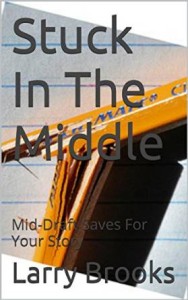
Also, TKZ’s James Scott Bell has a great ebook on this topic, as well.
 Have you ever wondered how to add emotional depth to a scene you’ve written? There are a number of techniques you can use to inject emotional depth and drama into a scene. Here are my top four techniques for scene deepening:
Have you ever wondered how to add emotional depth to a scene you’ve written? There are a number of techniques you can use to inject emotional depth and drama into a scene. Here are my top four techniques for scene deepening:



